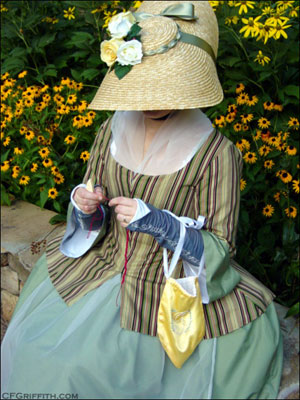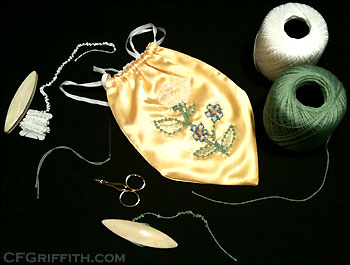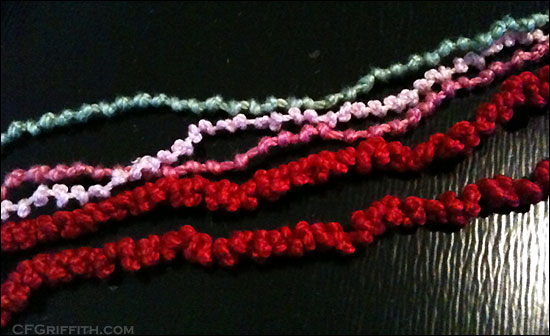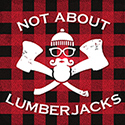 I recently started learning how to embroider, and I also discovered knotting shuttles.
I recently started learning how to embroider, and I also discovered knotting shuttles.
There is so little information about knotting shuttles, I’m always being asked what is it, how do you do it? Since I was so thankful for websites like Quaintrelle Life’s Knotting Page and Needle n’ Thread (for learning embroidery), as well as books like 18th Century Embroidery Techniques by Gail Marsh, I thought I would help spread the word as well.
I am not an expert at embroidery or knotting — I would love to learn more about both — but this is what I’ve been doing so far to get started. I am not claiming to be historically accurate either, although someday I am hoping to find more references and examples to study.
This is the first time I have made videos. I had to learn how to edit them, and I also wanted to keep as much information together as possible. Once you’ve seen the introduction of the knotting videos (the “Things You Need” section), you can skip to the knotting part. The couching video, however, has a slightly different introduction.
I apologize for any blurry or jumpy parts. The images on the viewscreen seemed to be clear enough, but especially on the couching video it blurred when my husband got close to what I was embroidering. My computer also doesn’t seem to like editing, so no matter what I did the video had jumpy parts to it.
I hope this helps!
Loading the Shuttle:
I’m hoping to buy a bigger knotting shuttle someday, but this is how I load thread onto the knotting shuttle. I’ve found crochet thread to be the best thread to use so far, but I’m sure I will try other fibers.
The Single Knot:
The basic knot. It creates a smaller, smoother line and is also the basic start for the other knots.
The Double-Sided Knot:
A medium-sized knot for creating different texture and variety.
The Sugar Plum Knot:
Another medium-sized knot for creating different texture and variety.
The Chenille Knot:
This is the largest knot I know. It takes the longest to make, and uses more thread, but the result is lovely.
Couching the Knotted Thread:
Knotting is a great way to pass the time, but here’s what you can do with those knotted threads. I’m still learning embroidery, and I also tend to take extra steps with securing the threads on the back of my work. I’m learning to trust that part of embroidery still. I definitely recommend checking out Needle n’ Thread, as well as other embroidery websites to learn more about embroidery.
And just for the fun of it…
Knotting Shuttle In The Garden:
This was the test video we made before I started working on the actual how-to videos. Unfortunately, we didn’t realize it wasn’t saved at widescreen, but ah well. My husband made this for me.
These videos are hosted on my YouTube Channel.




